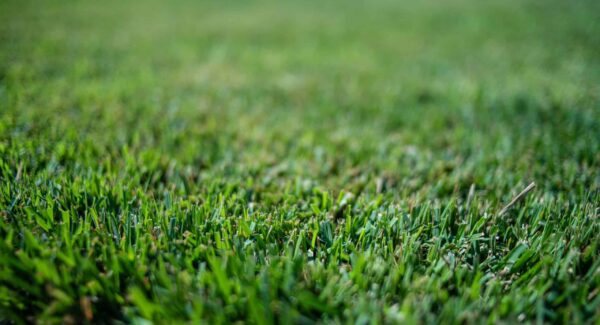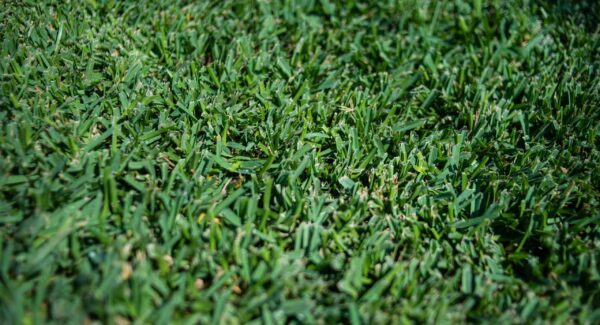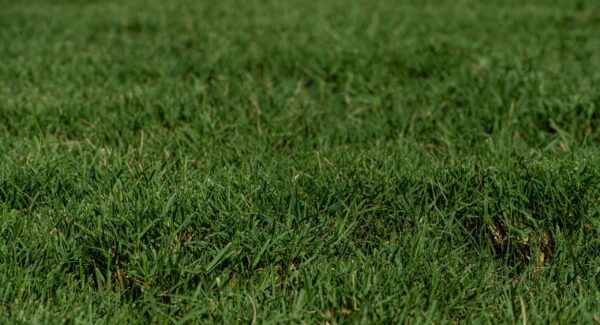How to Grow Grass in Sandy Soil
If you live near the sea or in regions with a desert climate, sandy soils are your reality. However, you desire a lush, green, and well-maintained lawn, just like those in central parts of the country. Is that achievable? Absolutely!
Sandy soil is challenging for growing grass. It is typically poor in nutrients, absorbs water quickly, and loses it just as quickly, making it difficult to maintain ideal soil moisture.
The poor retention of water and essential nutrients is due to the porous nature of sandy soil, requiring frequent watering and fertilizing. Sandy soils demand regular and careful maintenance to ensure healthy grass growth.
We encourage you to learn all the techniques and tools for maintaining a lawn on sandy soil. It shouldn’t discourage you; on the contrary, growing grass on sandy soil is possible despite its challenges. If you responsibly follow the steps and choose an appropriate type of grass for this soil type (drought-resistant and with deep roots to absorb water and nutrients), you won’t have to put in much effort, and you’ll soon have a beautiful lawn.
In this text, we will go through all the crucial points together, after which you will have a complete overview of how to grow grass on sandy soil:
- What is sandy soil really like
- Choosing the appropriate type of grass for sandy soil
- How to enrich the soil composition with nutrients
- Watering techniques for sandy soil
- What is involved in caring for grass when it grows on sandy soil
Let’s get started.
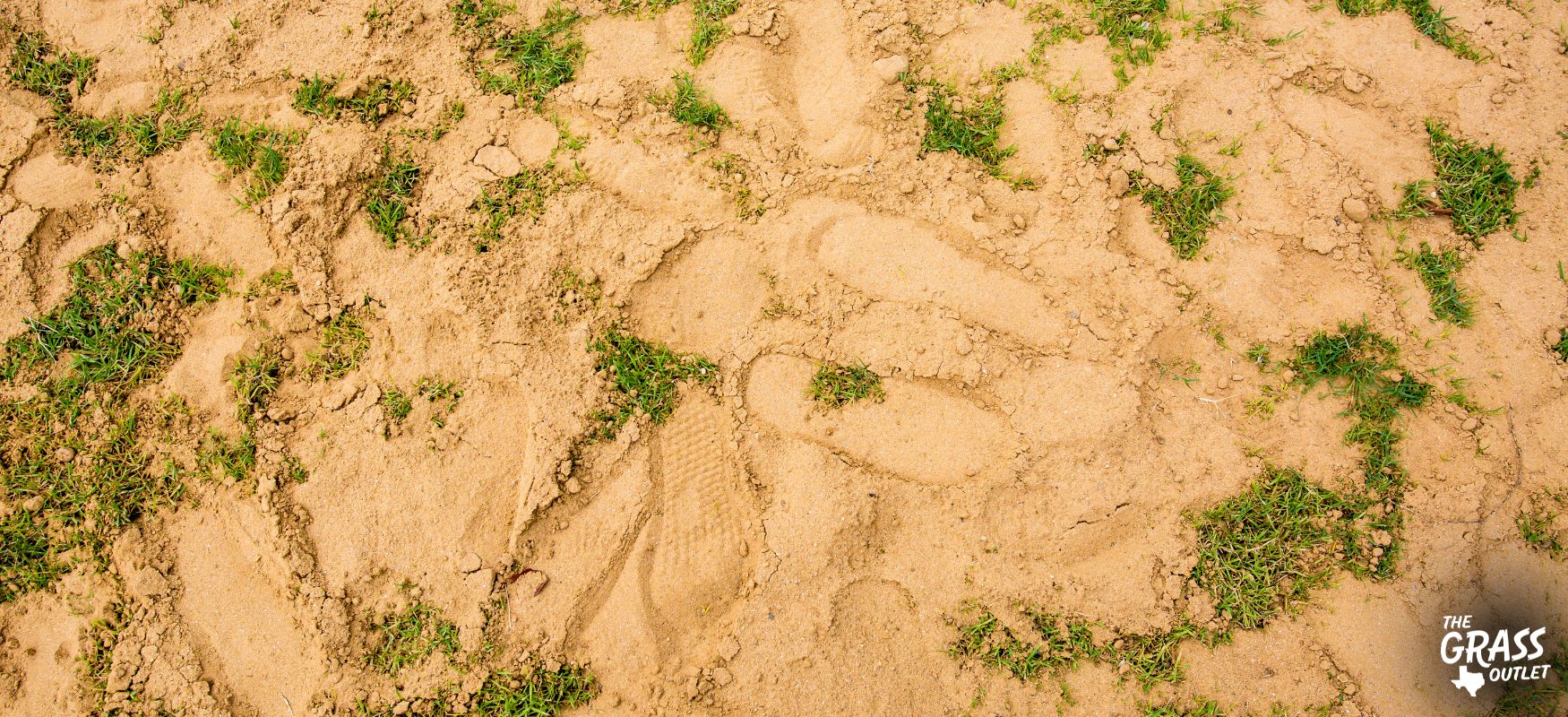
What is Sandy Soil Really Like?
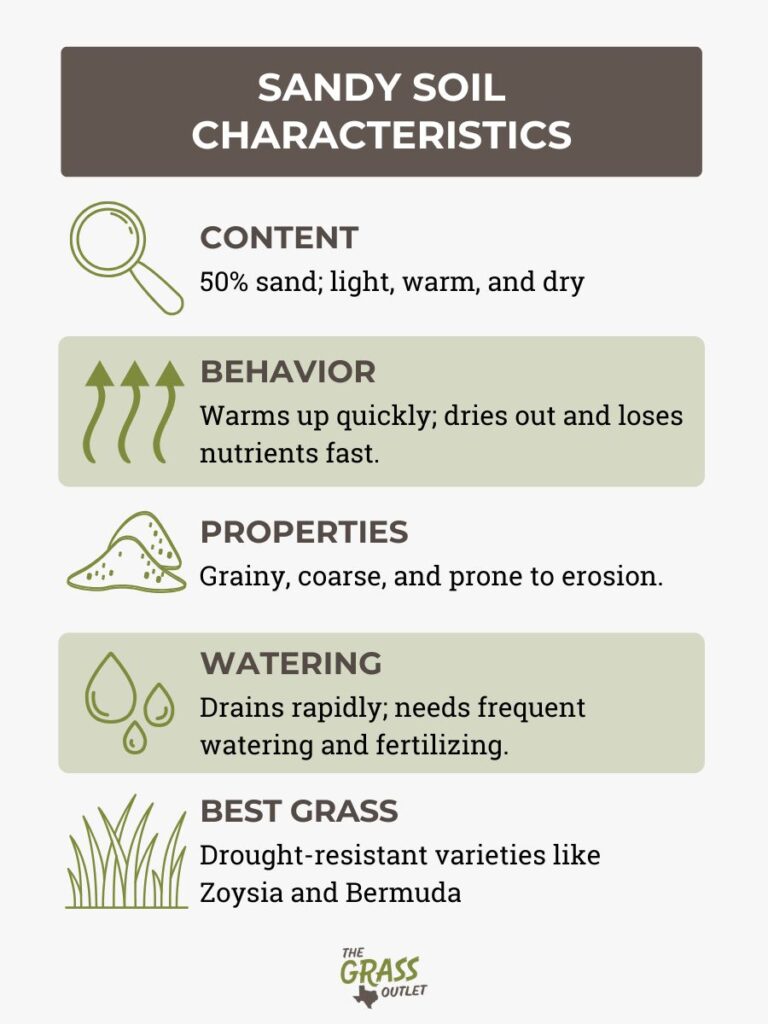
In spring, when temperatures start to rise, sandy soil warms up faster than clay soil. In summer, sandy soil is more likely to dry out and lose nutrients, which are also washed away by rain.
Sandy soil varies in color from yellow to red; to the touch, it feels like sand. It is easy to work with this type of soil. However, it is loose and prone to erosion, crumbles easily under fingers, and is grainy and coarse.
One of the main disadvantages of sandy soil is its ability to drain water quickly due to the large spaces between particles. Water drains rapidly through the soil, meaning plant roots cannot stay moist for long. Hence, frequent watering is needed.
Given that sandy soil loses nutrients quickly and easily, regular and careful fertilizer applications are needed to encourage grass growth.
Did you know that sandier soil drains better? This means your grass can establish a deeper root system in less time. If nutrient levels are monitored and maintained correctly, sandy soils can also create an environment less susceptible to fungal lawn diseases.
So, what is the first step to ensure a thriving lawn on sandy soil? Choose a drought-resistant grass with deep roots to absorb all the necessary nutrients from the soil.
Zoysia and Bermuda are excellent choices for hot regions.
Choosing the Right Grass for Sandy Soil
We now understand that sandy soil loses water and nutrients very quickly, so it is crucial to choose a grass that can withstand long periods of drought and has strong roots. Experts recommend opting for Zoysia or Bermuda grass.
Bermuda Grass is an excellent choice because it can endure long periods of drought. Its roots grow very deep, helping it become healthy, strong, and resilient. This deep rooting and drought tolerance make Bermuda well-suited for sandy soil, but it is also essential to know when to plant Bermuda grass to ensure its successful growth.
Bermuda also thrives in well-drained soil and loves direct sunlight. Depending on the Bermuda cultivar, it requires 6 to 8 hours of direct sun to grow healthily. Its growth begins in early spring and lasts through fall, after which it enters a dormant phase.
This grass variety handles traffic well, making it popular for golf courses and sports fields. It grows quickly and recovers easily from damage. Bermuda will remain green throughout the year if you live in hot regions that never experience frosts.
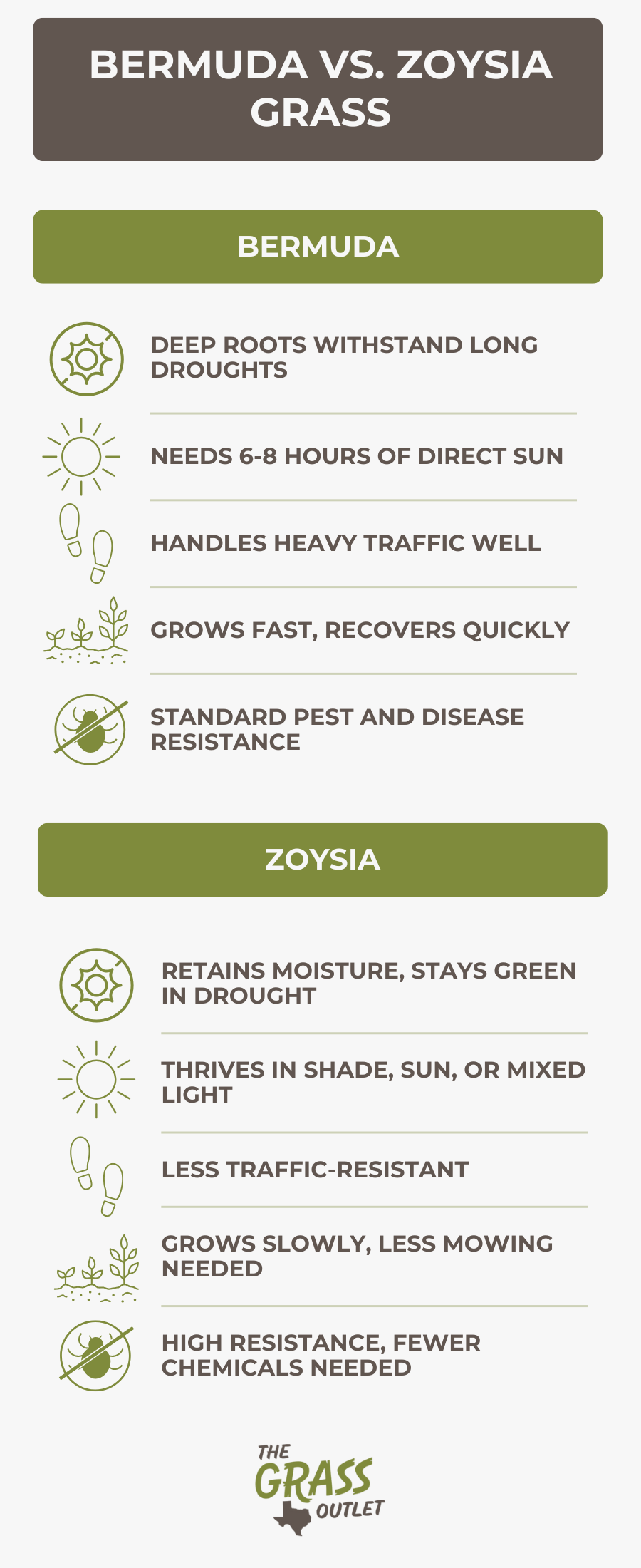 Zoysia Grass is often chosen for lawns in Texas because it withstands exceptionally high temperatures and drought. This grass also performs well in sandy soil and yards near the coast, as it, like Bermuda, has deep roots that extract necessary nutrients from quickly draining soil.
Zoysia Grass is often chosen for lawns in Texas because it withstands exceptionally high temperatures and drought. This grass also performs well in sandy soil and yards near the coast, as it, like Bermuda, has deep roots that extract necessary nutrients from quickly draining soil.
Zoysia is ideal for extremely dry areas. It retains moisture for a long time and maintains its green color even during prolonged droughts.
Although it grows more slowly than Bermuda, Zoysia resists pests and diseases, reducing the need for strong chemical treatments. Its very dense turf also means it doesn’t need frequent mowing.
Zoysia is also an excellent choice for lawns with shade, full sun – or a mixture of sunlight conditions.
Seeding or Sodding?
Choosing between seeding and sodding depends on specific needs, budget, and time constraints. Seeding is a significantly cheaper option compared to sodding because it is readily available and economical upfront. However, it requires more time and care. On sandy soil, seeds are susceptible to erosion from wind and water before they germinate and establish roots, meaning the success rate is low, and you may not get a total return on your investment.
Sodding provides quick results and resistance to erosion, but it comes at a higher cost and with potential adaptation issues to sandy soil. It has an already-established root system that helps prevent erosion and keeps the soil in place. Proper planning, water, and cultural practices make you more likely to see a full return on your investment.
Techniques for Improving Soil Quality
Sandy soil is the least fertile soil for growing grass, as it lacks the ability to retain moisture, easily lets water through, and is poor in nutrients.
Experts in this field say that the best way to strengthen it is by adding compost for lawn. Compost from food waste (FW) has proven very effective in improving the water retention capacity of sandy soil. This compost increases the organic matter in the soil, making it better able to retain moisture and essential nutrients, further promoting grass growth.
Professors from the Faculty of Engineering at Universiti Teknologi Malaysia conducted several tests and found that 100% food waste compost provided the highest increase (169%) in the amount of easily available water in sandy soil, increased total porosity by 6%, and reduced bulk density by 64%.
A study by the Department of Soil Science, Faculty of Food and Agricultural Sciences, King Saud University, showed that using natural clay deposits in combination with fine particles of wheat straw is a very effective and environmentally friendly technique for improving the quality of sandy soil. The soil then can retain water and moisture, better absorb nutrients, and thus contribute to healthier grass growth.
Organic matter acts like a sponge, retaining water and making it available to plants.
What else is recommended?
- Application of cover crops: Cover crops protect the soil from erosion, weeds, pests, and diseases and improve fertility, structure, and soil quality.
- Choosing the appropriate grass variety: Select grasses adapted to your yard’s soil type.
How to Fertilize Sandy Soil
To ensure a continuous small amount of necessary nutrients in sandy soil, you should use slow-release granular fertilizer. Before planting the grass, you can apply the fertilizer to the soil. Once the grass starts growing, apply the fertilizer to the soil surface and mix it in.
The application involves using dry fertilizer at a rate of one pound of nitrogen per 1,000 square feet of lawn. After that, apply a fertilizer containing only nitrogen in the same amount every second application.
Why is Aeration Desirable for Sandy Soil?
Soil aeration is one of the most essential practices for maintaining lawn health, especially on sandy soil. This process involves creating small holes in the soil for better air, water, and nutrient circulation.
Regular aeration reduces soil compaction, improving its structure. It also allows better drainage and increases the soil’s capacity to retain water and nutrients. Top dressing with nutrient compost after aerating can improve the quality of your sandy soil over time.
Sandy soil may require aeration several times a year, depending on the level of compaction and the health of the lawn. The best time for aeration is when growth conditions are optimal in the spring and fall. Avoid aeration during extreme weather conditions such as drought or excessive rain.
Irrigation Techniques for Sandy Soil
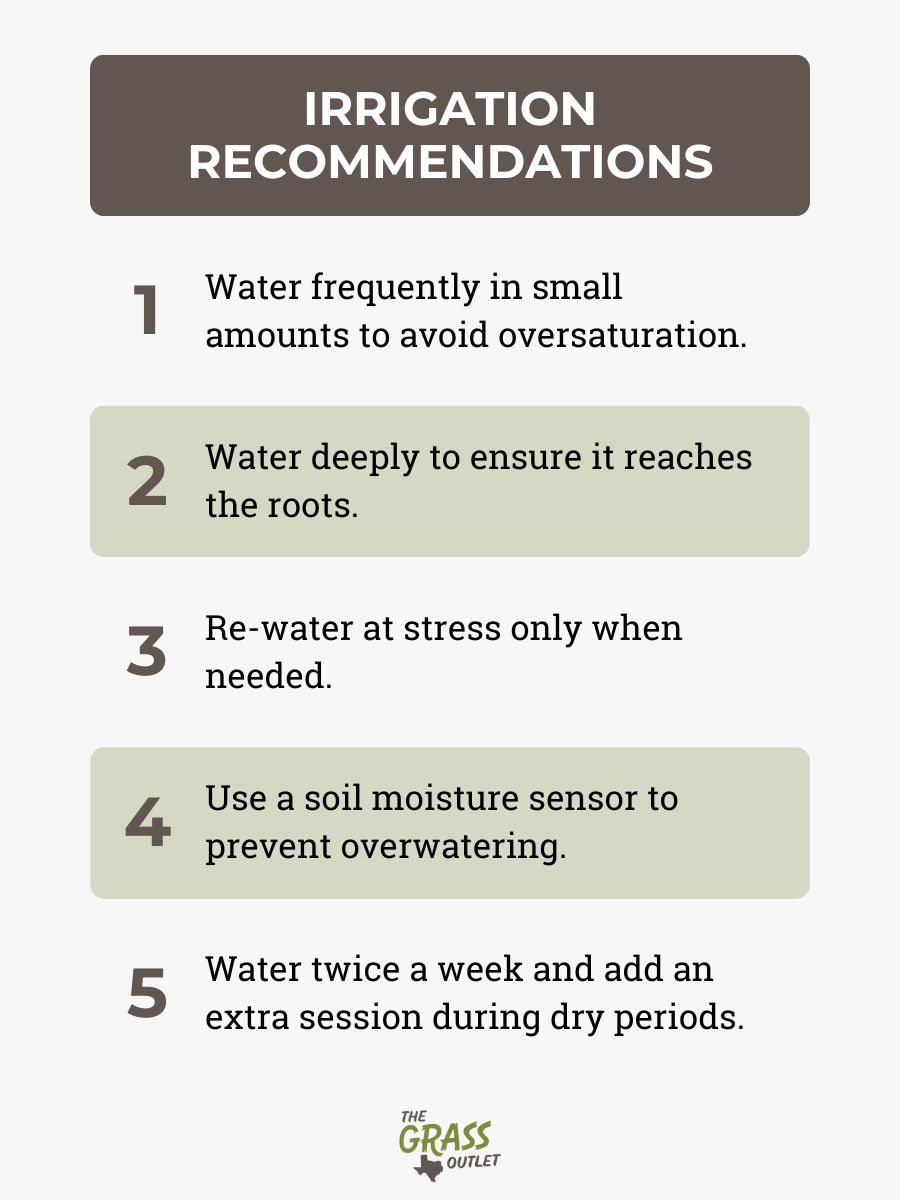
Properly installed and managed sprinkler systems are an excellent method for sandy soils.
Drip irrigation is also adequate but tends to be more expensive.
A study has shown that the implementation of wireless sensors in irrigating sandy soils has significant potential.
Here are some recommendations that will be immediately useful:
- Water frequently but in smaller amounts helps maintain moisture without over-saturating the soil.
- Water deeply: Ensure the water penetrates deeply enough to soak the roots adequately.
- Re-water at signs of stress: Only resume watering when signs of stress appear.
- Use a soil moisture sensor: This will guide you on when to irrigate, preventing overwatering.
- Water twice a week: This frequency is usually sufficient, but add an extra session during dry summers.
Year-round Care and Maintenance of Lawns on Sandy Soil
Like lawns planted on other types of soil, lawns planted on sandy soil require proper mowing to establish and maintain deep roots. Deep roots help grass absorb the necessary nutrients. However, maintaining deep roots here is challenging because rain drains the topsoil layer quickly.
To encourage deep rooting, mow your lawn often enough to maintain the higher end of the recommended mow height for the specific cultivar planted. The mower blades should always be sharp, as dull blades tear the grass, making it susceptible to diseases and pests. Experts recommend keeping the blades long and varying the mowing direction each time to prevent soil compaction and the formation of ruts.
Return the clippings to the lawn, as this practice satisfies its need for organic fertilizer. This method works best with frequently mowed grass.
Pest and Disease Monitoring
Sandy soil dries out quickly, making grass more susceptible to stress. If you notice irregular patches of yellow or brown grass, it may indicate the presence of pests such as common bugs grubworms or chinch bugs. These pests thrive in sandy soil and can cause significant damage by feeding on grass roots and sap.
Sandy soil is less compact, making it easier for insects like mole crickets to create tunnels. These tunnels can lead to thinning grass or bare spots where grass struggles to grow.
If grass quickly pulls out from sandy soil and you find more than five white, C-shaped grubs per sq ft underneath, it indicates a grub infestation. These pests feed on roots, causing the grass to become loose and easy to pull out.
Regularly inspect the lawn for visible insects such as armyworms, sod webworms, and billbugs. These pests are more common in sandy soils and can cause significant damage by feeding on grass blades and stems.
Diseases like brown patches or dollar spots can cause circular, discolored patches on the lawn. These patches can be yellowish, brown, or straw-colored and can spread quickly if untreated.Spots on grass blades, often caused by fungal diseases like leaf spots or rust, can appear as small, discolored lesions. These spots can merge, causing more significant areas of damage.
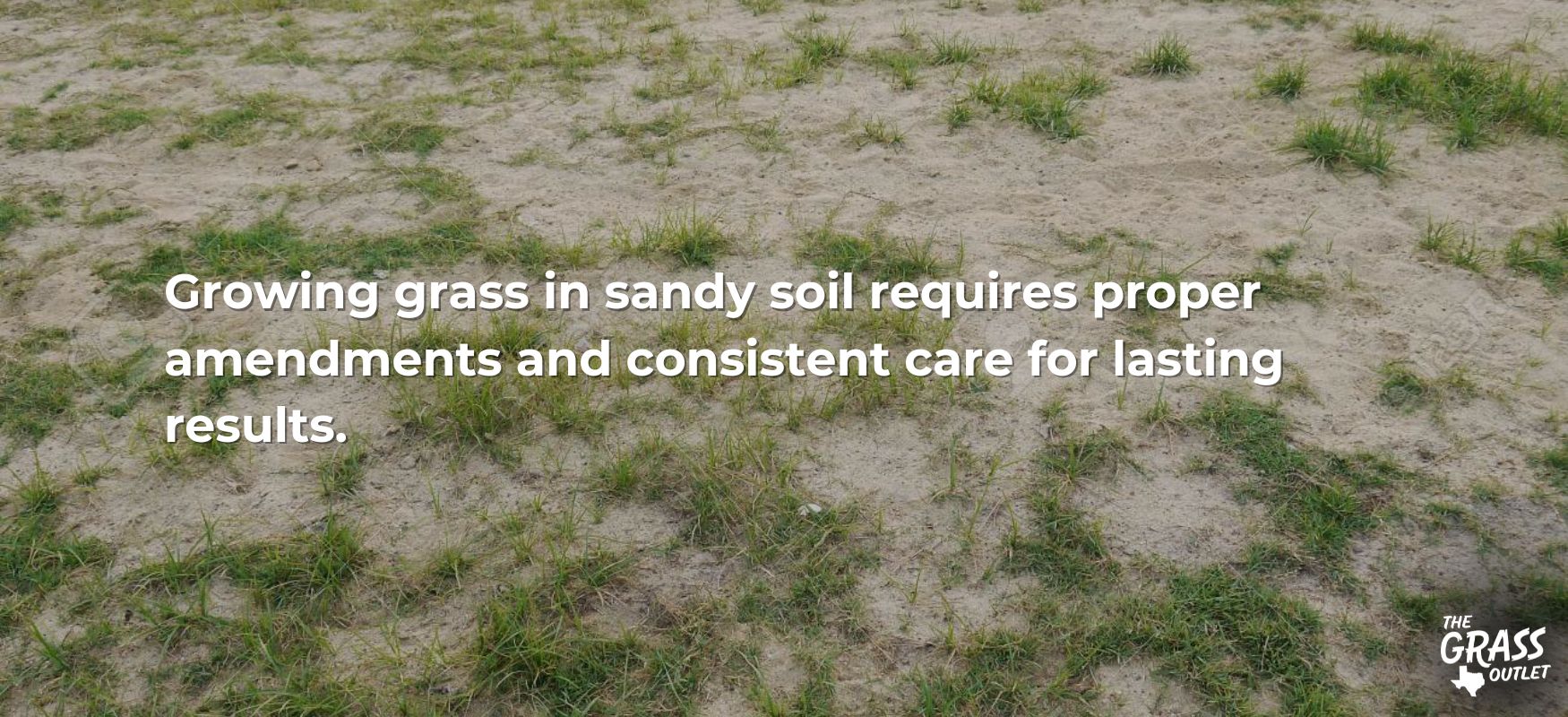
Conclusion
Sandy soil requires special measures and constant care to achieve successful plant growth. Proper water management and adding organic matter can significantly improve the fertility and health of plants on such soil.
Maintaining a lawn on this soil type is challenging but possible. Therefore, following expert advice and applying all necessary maintenance techniques is essential.
As we have learned, there are ways to enrich and strengthen sandy soil, which is poor in nutrients and quickly loses water, primarily by adding organic compost. Indeed, the choice of grass is crucial, and Zoysia and Bermuda are excellent solutions, as they can withstand long dry periods.
Be patient, follow all the recommended practices, and a beautiful lawn will no longer be a dream but a reality.
The Grass Outlet – Your Address for All Lawn Care Information
We are available to answer any questions regarding lawn maintenance, especially if you need help managing it on sandy soil.
Contact The Grass Outlet, and you will quickly receive the necessary answers from our experts.
